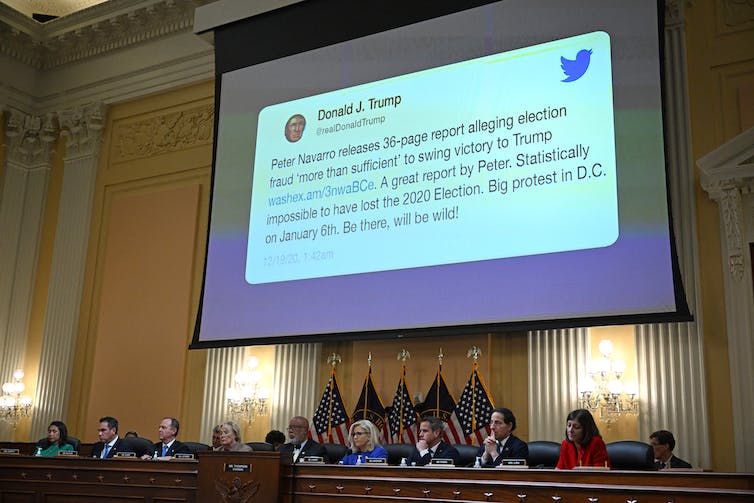The shocking events of Jan. 6, 2021, signaled a major break from the nonviolent rallies that categorized most major protests over the past few decades.
What set Jan. 6 apart was the president of the United States using his cellphone to direct an attack on the Capitol, and those who stormed the Capitol being wired and ready for insurrection.
My co-authors and I, a media and disinformation scholar, call this networked incitement: influential figures inciting large-scale political violence via social media. Networked incitement involves insurgents communicating across multiple platforms to command and coordinate mobilized social movements in the moment of action.
The reason there was not more bloodshed on Jan. 6 emerged through investigation into the Oath Keepers, a vigilante organization composed mostly of former military and police. During their trials for seditious conspiracy, members of the Oath Keepers testified about weapons caches in hotels and vans, stashed near Washington, D.C. As one member described it, “I had not seen that many weapons in one location since I was in the military.”
The Oath Keepers were following Washington law by not carrying the weapons in the district, while waiting for Trump to invoke the Insurrection Act, which gives the president the authority to deploy the military domestically for law enforcement.
The militia was waiting for orders from Trump. That was all that kept U.S. democracy safe from armed warfare that day.

The House Select Committee hearings on the Jan. 6 attack highlighted the role of President Trump’s tweets.
Mandel Ngan/AFP via Getty Images
Social media as command and control
What happened in D.C. on Jan. 6, 2021, does not easily fit into typical social movement frameworks for describing mobilization. The insurrectionists behaved akin to a networked social movement, with online platforms forming the infrastructure to organize action, but its leaders were politicians and political operatives as opposed to charismatic community leaders. On that day in particular, the insurrectionists, who are closely aligned with MAGA Republicans more broadly, functioned like Trump’s volunteer army rather than a populist movement.
Even with the availability of social media, networked social movements still need mainstream media coverage to legitimize their cause. Typically, community organizers push a particular issue – for example Black Lives Matter and #MeToo – into the media spotlight to get the public to care about their issue. Social movements tend to struggle for exposure and to frame favorable narratives.
The insurrectionists had the advantage of betting on mainstream media coverage for Jan. 6, so they focused on gathering resources and coordinating attendance. As a result, Trump’s supporters did not need to expend much effort to bring attention to the event and, instead, concentrated on organizing ride-shares and splitting hotel costs. As in…



